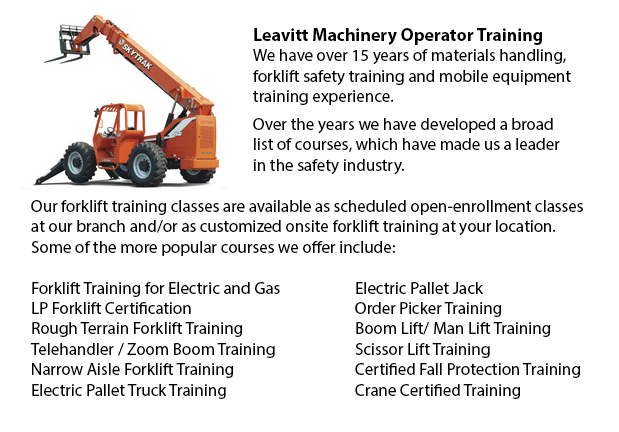
Sudbury Telehandler Ticket - The telescopic handler or telehandler is a commonly used machine in agricultural and industrial applications. This particular machine is similar in look to a forklift and also functions in a similar way, even if telehandlers are much more like a crane than forklift. It has a telescopic boom that could extend forward and upward from the motor vehicle. The boom has the capability to fit one of various attachments like for instance muck grab, pallet forks, a bucket or a lift table.
The most common telehandler attachments are pallet tines. The telehandler is used so as to transport goods in places where the loads cannot be moved by a standard forklift. Telehandlers are particularly helpful for placing loads on rooftops for example, or for removing palletized cargo from with a trailer. Many of the tasks that a telehandler could accomplish would otherwise require a crane and this particular piece of equipment could be expensive, impractical and not always time efficient.
The boom acts as a lever, extending and raising while bearing a load. Even if there are rear counterweights, this may cause the telehandler to become more unstable. Thus, the greatest advantage of the telehandler is also its greatest limitation. As the working radius increases, the lifting capacity decreases. The working radius is defined as the distance between the front of the wheels and the center of the load.
For example, a telehandler with a 5000 lb capacity with the boom retracted could safely lift as little as 400 lb once it is fully extended at a low boom angle. The equivalent equipment which has a 5000 lb lift capacity and the boom retracted could support as much as 10,000 lb with the boom raised to 70 degrees. The operator has a load chart in order to help determine whether a certain lifting job could be completed in an efficient and safe manner. This chart takes into consideration the height, the boom angle and the weight.
-
Wheel and Track Loader Training in Sudbury
Lift trucks are obtainable in several different models that have different load capacities. The majority of average forklifts used in warehouse environment have load capacities of 1-5 tons. Bigger scale units are utilized for heavier loads, like for... More -
Sudbury Aerial Lift Certification
Sudbury Aerial Lift Certification - Aerial Lift Certification is for individuals who requires an in-depth understanding of aerial lift safety. Inspectors and operators, supervisors, maintenance workers and construction craftsmen must perform a traini... More -
Sudbury Forklift Certification Schools
Sudbury Forklift Certification Schools - Within North America, forklift certification is mandatory, making forklift training programs necessary for both the company and their employees working as forklift operators. Forklift training focuses on healt... More -
Sudbury Boom Lift Operator Training
Sudbury Boom Lift Operator Training - A cherry picker refers to a type of aerial work platform. Cherry pickers include a platform or bucket at the end of a hydraulic lifting system. The device is likewise called a man lift, boom lift, basket crane or... More -
Sudbury Telehandler Certification
Sudbury Telehandler Certification - Telehandler certification programs are both for operators who have some experience driving a standard forklift and for those with no experience. The real-world training offered by these courses produces graduates w... More -
Operator Safety Training, Re-Qualification Training, In-House Instructor Training in Sudbury
Lift trucks are utilized in just about all industrial construction sites and in warehouse operations and in boat yards. The reach feature of a lift truck is a vital component used in several applications like for example when a shelving system is bei... More -
Crane / Overhead Crane / Self-Erect Crane / Truck Mounted Crane / Hydraulic Cranes Training in Sudbury
Bridge cranes or overhead cranes are a type of industrial material handling crane making use of a line and hook apparatus which runs on a horizontal beam running along two widely separated rails. Lots of overhead cranes could be seen in a long factor... More -
Sudbury Forklift Safety Training
Sudbury Forklift Safety Training - Anyone who wants to operate a lift truck should take a forklift safety training course in order to become a certified forklift truck operator. There are a variety of ways to obtain forklift training. Programs are pr... More

Forklift Certification Sudbury
TOLL FREE: 1-888-254-6157
Sudbury, Ontario
forkliftcertificationsudbury.com
Email Us
About Us


